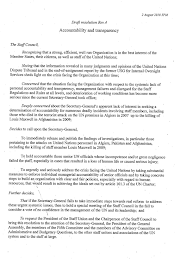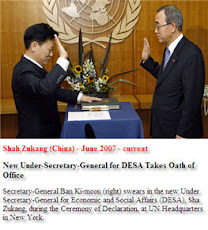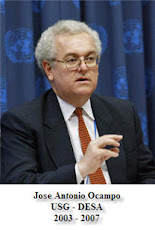UNITED NATIONS — It will cost between $500 billion and $600 billion every year for the next 10 years to allow developing nations to grow using renewable energy resources, instead of relying on dirty fuels that worsen global warming, according to a United Nations report released Tuesday.
That astronomical estimate, far higher than any previously suggested by the United Nations, comes at a time when developed and developing nations are still deeply divided over who bears the responsibility for shouldering the expense of deploying cleaner energy resources, much less what the actual amount might be.
The issue of who will foot the bill remains one of the significant hurdles to reaching a global agreement on combating climate change by December in Copenhagen. Much of the focus in the talks has also been on significant emissions cuts.
“We need a public investment program to drive this shift into cleaner energy resources,” said Rob Vos, the director of development policy in the Department of Economic and Social Affairs, which produced the report, comparing it to the Marshall Plan, through which the United States rebuilt European economies after World War II. “The major obstacle is to convince political leaders and their constituencies to go in that direction.”
Developing nations want a commitment from the developed world of financial support for reducing current and future emissions, but no concrete commitments have been forthcoming. At the summit meeting of African Union leaders this week in Tripoli, Libya, members agreed to ask the industrialized world for $67 billion annually, including compensation for the consequences of global warming it created, according to news reports.
The developed world, by contrast, wants a commitment to reduce emissions up front, suggesting that financial support will follow. The United States Senate is supposed to address the issue by the end of September, while the European Union expects to come up with a proposed financial package in October.
Senior United Nations officials say they hope that a special summit meeting on climate change, with about 100 world leaders expected to attend on Sept. 22, the day before the United Nations General Assembly begins, will help break the impasse.
Numbers bandied about previously were in the $100 billion range, with leaders like Prime Minister Gordon Brown of Britain suggesting a combination of government and private money. “The initial cost and the initial investment to put emissions on a sustainable path are large; no one knows exactly what the cost is,” said Mark Kenber, policy director at The Climate Group, a nonprofit organization focused on combating climate change.
But the new United Nations report suggests that adapting to the effects of global warming, lowering future emissions and growing economically all need to be addressed through a global fund covering at least some of the cost from 2010 to 2020. The figure starting at $500 billion is the cost of building the infrastructure needed in the developing world, including in giants like India and China, to meet their energy needs using renewable resources like wind and solar.
That sum represents roughly 1 percent of the annual global economic output, and it is smaller than the total amount committed under the various national economic stimulus packages, Mr. Vos noted. Only about $21 billion has been committed to combating climate change, he said. One way to generate the money might be through a “global tax” on carbon emissions of about $50 per ton, the report said, which would raise about $500 billion.
Experts said that a global tax might seem like an ideal solution on an academic level, but that it would be a nearly impossible sell in the real world. Still, the main strength of trying to get the world on the same page in terms of how to fight climate change is that it would reduce costs for everybody, Mr. Kenber said.























No comments:
Post a Comment